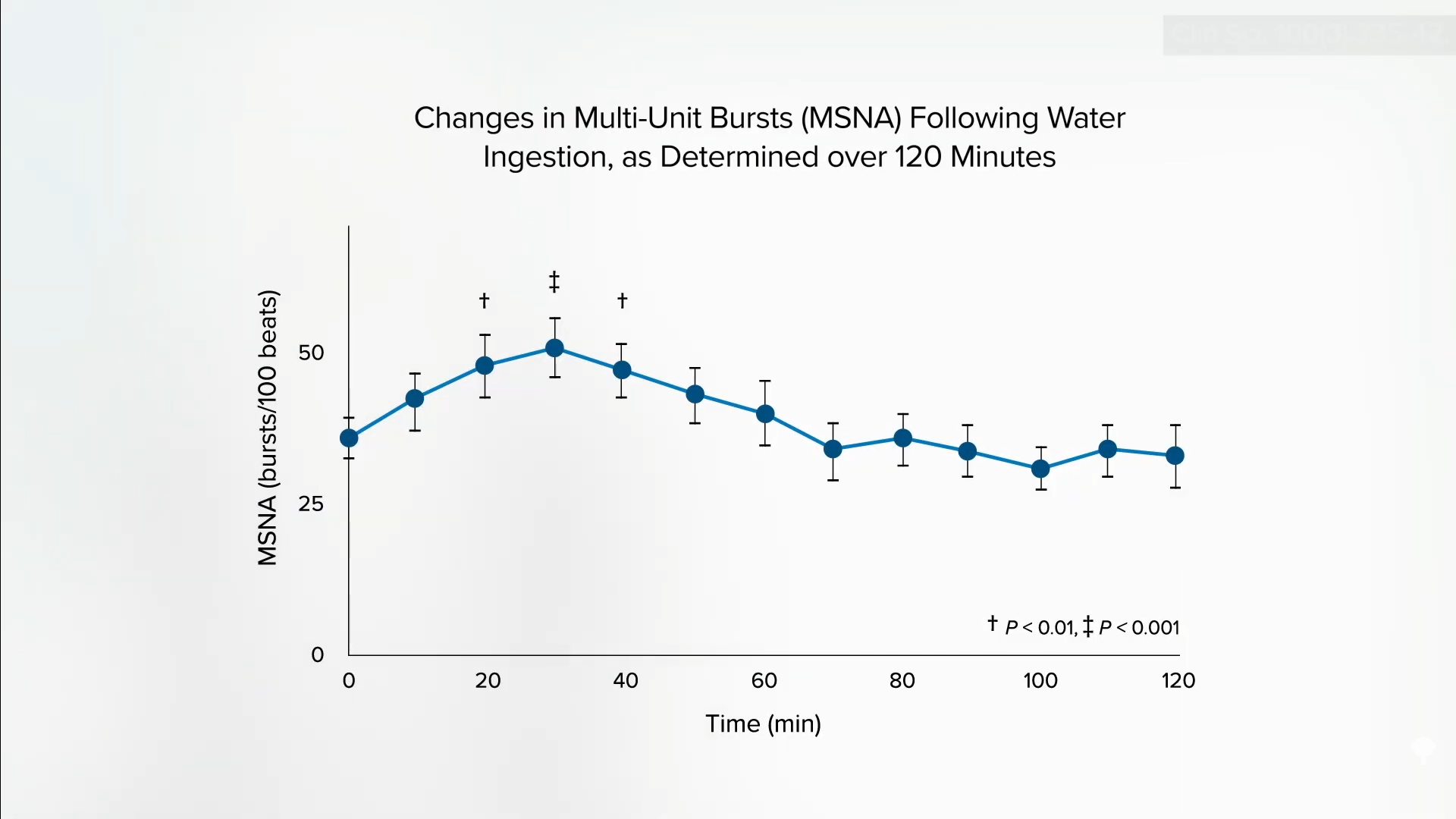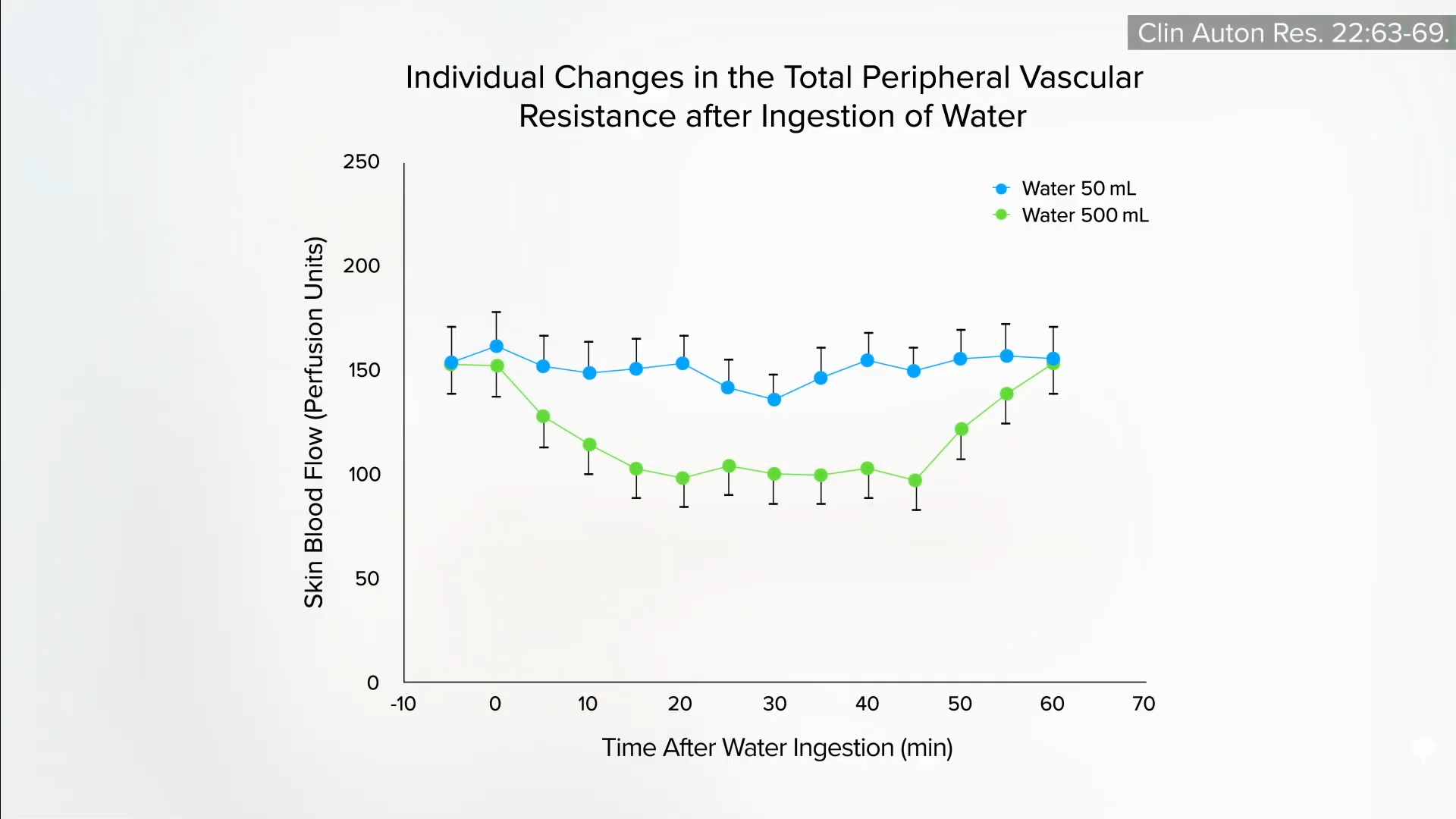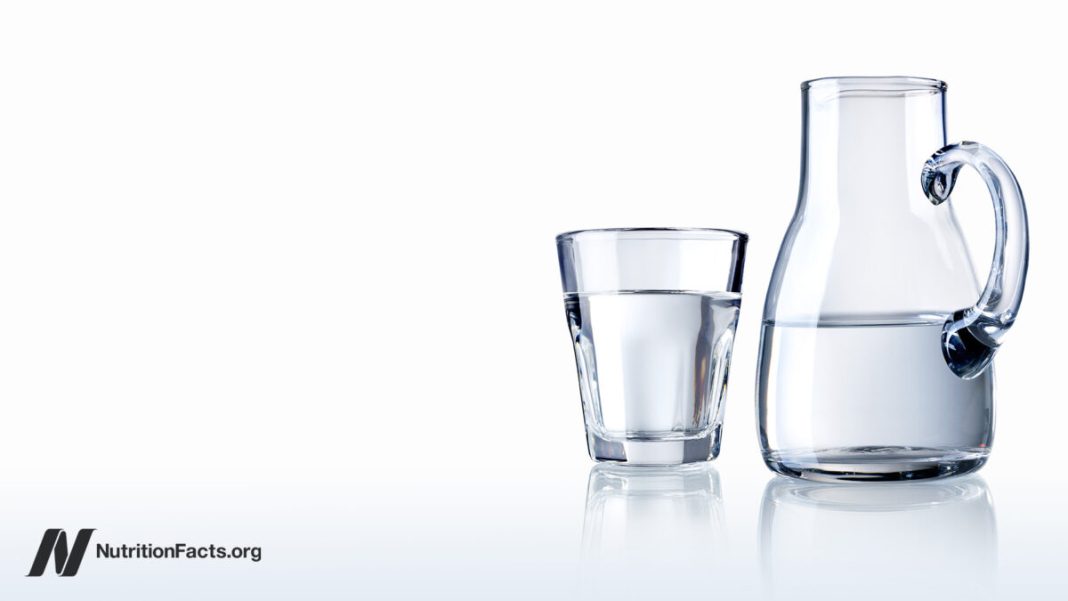Drinking water can be a safe, simple, and effective way to prevent yourself from fainting.
Within three minutes of drinking a few cups of water (12 mL/kg of body weight), the level of the adrenal gland hormone noradrenaline in our bloodstream can shoot up by 60 percent, as you can see in the graph below and at 0:19 in my video The Effect of Drinking Water on Adrenal Hormones.
When researchers had people drink two cups (500 mL) of water with electrodes on their legs, about a 40 percent increase in bursts of fight-or-flight nerve activity within 20 minutes was documented, as shown in the graph below and at 0:25 in my video.

If you drink two or three cups (11 mL/kg of body weight) of water, blood flow squeezes down in your arms and calves, clamping down nearly in half, as the arteries to your limbs and skin constrict to divert blood to your core, as you can see in the graph below and at 0:42 in my video. That’s why drinking water can be such a safe, simple, and effective way to prevent yourself from fainting, which is known medically as syncope.

Fainting is “the sudden brief loss of consciousness caused by diminished cerebral blood flow,” that is, to the brain. About one in five people experience this at least once, and about one in ten may have repeated episodes. It’s the cause of millions of emergency room visits and hospitalizations every year. Though fainting can be caused by heart problems, it is most often triggered by prolonged standing (because blood pools in our legs) or strong emotions, which can cause our blood pressure to bottom out.
About 1 in 25 people has what’s called blood-injury-injection phobia, where getting a needle stick, for example, can cause you to faint. More than 150,000 people experience fainting or near-fainting spells each year when they donate blood. To help prevent yourself from getting woozy, try drinking two cups of water (500 mL) five minutes before getting stuck with the needle. The secret isn’t in bolstering your overall blood volume. If you drink two cups of water or even a whole quart (500 to 1,000 mL), your blood volume doesn’t change by more than 1 or 2 percent. Rather, it’s due to the shift in the distribution of blood toward your center, caused by the noradrenaline-induced peripheral artery constriction, as you can see in the graph below and at 1:56 in my video.

Drinking water stimulates as much noradrenaline release as drinking a couple cups of coffee or smoking a couple unfiltered cigarettes. If the simple act of drinking water causes such a profound fight-or-flight reaction, why doesn’t it cause our heart to pound and shoot our blood pressure through the roof? It’s like the diving reflex I talked about in my previous video. When we drink water, our body simultaneously sends signals to our heart to slow it down, to “still your beating heart.” You can try it at home: Measure your heart rate before and after drinking two cups (500 mL) of water. Within ten minutes, your heart rate should slow by about four beats per minute. By 15 minutes, you should be down by six or seven beats, as you can see in the graph below and at 2:42 in my video.

One of the ways scientists figured this out was by studying heart transplant patients. When you move a heart from one person to another, you have to sever all the attached nerves. Amazingly, some of the nerves grow back. But still, if you give healed heart transplant patients two glasses of water, their blood pressure goes up as much as 29 points. The body is unable to sufficiently quell the effect of that burst of noradrenaline. Some people have a condition known as autonomic failure, in which blood pressure regulation nerves don’t work properly and their pressures can skyrocket dangerously by more than 100 points after drinking about two cups (480 mL) of water. That’s how powerful an effect the simple act of drinking water can be. The only reason that doesn’t happen to all of us is that we have an even more powerful counter-response to keep our hearts in check. (This reminds me of the woman who had a stroke after taking the ice bucket challenge due to an insufficient diving reflex to tamp down all that extra noradrenaline release.)
This remarkable water effect can be useful for people suffering from milder forms of autonomic failure, such as orthostatic hypotension, which is when people get dizzy after standing up suddenly. Drinking some water before getting out of bed in the morning can be a big help. What about that metabolic boost, though? With so much noradrenaline being released and your adrenal gland hormones in overdrive, might drinking a few glasses of water cause you to burn more body fat? Could tap water be a safe form of ephedra, giving us all the weight loss but with a nice slowing of our heart rate instead? Researchers decided to put it to the test, which we’ll explore next.
If you missed the previous video, check out How to Get the Weight Loss Benefits of Ephedra Without the Risks.
Stay tuned for What Is the Safest Metabolism Booster? and Friday Favorites: Optimizing Water Intake to Lose Weight.
What kind of water is better? Find out in Is it Best to Drink Tap, Filtered, or Bottled Water?.







